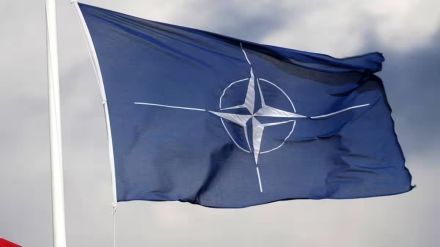By Chetan Rana
NATO had been in an existential crisis for a while. It is a Cold war era military alliance which has struggled since its end. The dissolution of the Soviet Union and the emergence of a weak Russia took away the arch-nemesis against whom the alliance was designed. Its record in military interventions and the War on Terror is at best patchy. However, the Russian invasion of Ukraine in 2022 provided an opportunity for NATO’s revival. In light of these developments, significant discussions were held in Vilnius, Lithuania regarding NATO’s response and future.
Fueled by Anxieties
The invasion has triggered anxiety amongst the European states. The response to this has taken many forms. First, long-standing neutral or non-NATO European states, Sweden and Finland, are now vying for NATO’s security umbrella. While Finland’s membership has been processed, Sweden’s path has now been cleared after it decided to cut down on support to Kurdish groups and reciprocate support for Turkey’s inclusion in the EU. Even the United States has greased the deal by negotiating the sale of F-16s to Turkey.
Second, European states which have been reluctant to spend on defence, especially Germany, are now changing their policies. Several states are meeting and, in some cases like Poland, are going beyond the 2% of GDP mark. Moreover, the inclusion of Finland and Sweden should also strengthen the capacities of the alliance.
Third, it revives the idea of a security community as the Western continental European states have responded with a similar urgency and a collective desire to defend against Russia. This highlights a common feeling of ontological insecurity present across the continent. However, Ukraine’s location in this security community remains uncertain.
Ukraine’s Unclear Path
The most noticeable moment of the summit was the participation of Ukrainian President Zelensky in the inaugural NATO-Ukraine Council. He called out NATO for its ‘absurd’ plan and for failing to lay out a timeline for Ukraine’s membership. This came as NATO leaders’ declaration said that Ukraine shall be invited to join once the ‘allies agree and conditions are met’. It was not surprising. Ambiguity is not always a lack of decision, sometimes it is the decision.
Effectively, the Vilnius position marks little progress from the 2008 Bucharest agreement where Ukraine was not offered the Membership Action Plan (MAP). Ukraine’s membership in NATO has been riskier (and even more unlikely) since the annexation of Crimea in 2014. NATO members will have to engage in direct war with Russia and risk their people to Russian aggression if Ukraine is included when it’s in an active conflict. Conversely, this incentivises Russia to continue the conflict as a form of deterrence.
NATO states, despite Zelensky’s criticism, have put their weight behind him through the security guarantees. NATO has also agreed to simplify the path for Ukraine’s eventual membership. There is a 25.8% increase in NATO’s military budget for 2023 largely to aid Ukraine. NATO and European states have transferred Leopard 2 tanks, Caesar guns, rocket and missile systems (HIMARS and NASAMS), anti-tank weapons and small arms. France recently announced that it will also provide Ukraine with SCALP missiles that have a range of 250 km and the ability to bypass Russian counter-offensives.
The US has provided over $76 billion in aid since the invasion. The US is close to allowing its European allies to provide Ukraine with F-16s and controversially, approved the transfer of cluster munitions. The Convention on Cluster Munitions, which stemmed from the initiative of the present NATO Secretary General Jens Stoltenberg, bans the use of these indiscriminate weapons. However, states like the US, India, and Russia amongst others are yet to ratify it.
The Future
The 2024 Summit will mark 75 years of NATO. The summit is scheduled to be hosted in Washington DC. If the war continues without any clear victor in sight, NATO will have to reassess the possibility of either stepping back from the unsustainable levels of military aid or stepping up risking a chicken game with Russia.
The Ukraine crisis has given NATO a new lease of life. The expansion of NATO and heightened anxieties of its members may allow it to plan sub-regional integration, for example, potentially putting together a capable fleet of 4th and 5th-generation aircraft in the Baltics. Yet its long-term relevance depends on its ability to grow out of its cold war structure and look beyond the trans-Atlantic.
Stoltenberg, standing next to the Japanese PM Kishida, claimed that one must think of ‘global security instead of regional security’. Though the increased alignment between NATO and Asian states like South Korea and Japan has sparked discussions over the possibility of an ASIAN NATO, this currently seems unlikely. The communique released at the summit expectedly condemned Russia. However, China, while they’ve raised concerns over its ambitions and coercive policies to ‘subvert the rules-based international order’ and ‘efforts to divide the alliance’ yet they ‘remain open to constructive engagement’. In any case, selective interests-based minilateralism seems to be the preferred route in the Indo-Pacific over a treaty bound multilateral security alliance, at least for now.
The author is a PhD Candidate at the Centre for International Politics, Organization and Disarmament (CIPOD), Jawaharlal Nehru University, New Delhi. Email ID: chetan.rana96@gmail.com & Twitter: @ChetanRana96
Disclaimer: Views expressed are personal and do not reflect the official position or policy of Financial Express Online. Reproducing this content without permission is prohibited.
